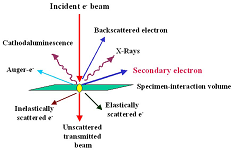
Asia Pacific Academy of Science Pte. Ltd. (APACSCI) specializes in international journal publishing. APACSCI adopts the open access publishing model and provides an important communication bridge for academic groups whose interest fields include engineering, technology, medicine, computer, mathematics, agriculture and forestry, and environment.

Application of ZnO nanoparticles modified with bacterial proteins for the removal of trypan blue effluent
Vol 6, Issue 1, 2025
Download PDF
Abstract
In this study, a bacterial protein-coated nanoparticle system is modified as a new biosorbent. Escherichia coli (E. coli), and Staphylococcus aureus (S. aureus) bacterial proteins are collected, and successfully coated onto zinc oxide nanoparticles (ZnONPs). The new biosorbents are combined between the attractive surface properties of the nanoparticles and the adsorbed protein corona. ZnONPs, ZnONPs/E. coli, and ZnONPs/S. aureus were characterized using X-ray diffraction (XRD), Brunauer-Emmett-Teller (BET), Scanning Electron Microscopy (SEM), and Infrared spectroscopy (FT-IR) studies analysis. The Bradford method was used to ensure the presence of protein corona on the modified surface. The addition of bacterial proteins to the surface of the ZnONPs alters its activity through modifications of its size, shape, surface charge, and other characteristics. The improvement of the functional groups and surface charge of the modified biosorbents makes it more efficient for the removal of dyes. ZnONPs, ZnONPs/E. coli, and ZnONPs/S. aureus were used for the removal of trypan blue (TB) dye from contaminated wastewater. The TB dye was completely removed (98%–100%) using ZnONPs/E. coli, and ZnONPs/S. aureus within 25–30 min, whether in the dark or light conditions, over a wide pH range (5–9). The negative values of ∆G showed the spontaneous nature of the removal process. The ∆H values confirmed an endothermic removal in the dark and an exothermic removal in the light. ZnONPs/E. coli, and ZnONPs/S. aureus were applied for the removal of TB dye from real wastewater samples, and their efficiencies were proven. The average removal rate of TB dye using ZnONPs E. coli, and ZnONPs/S. aureus was 92 % which is more efficient than that of ZnONPs (87 %), and the average value of RSD% was 1.7 % (n = 5).
Keywords
References
1. Czekała W, Pulka J. Water, Wastewater, Waste Management in Agriculture and Agri-Food Industry. Water. 2024; 16(13): 1817. doi: 10.3390/w16131817
2. Mohamed Noor MH, Ngadi N. Global research landscape on coagulation-flocculation for wastewater treatment: A 2000–2023 bibliometric analysis. Journal of Water Process Engineering. 2024; 64: 105696. doi: 10.1016/j.jwpe.2024.105696
3. Amini M, Ashrafi M. Photocatalytic degradation of some organic dyes under solar light irradiation using TiO2 and ZnO nanoparticles. Nanochemistry Research; 2016.
4. Ngulube KF, Abdelhaleem A, Osman AI, et al. Advancing sustainable water treatment strategies: harnessing magnetite-based photocatalysts and techno-economic analysis for enhanced wastewater management in the context of SDGs. Environmental Science and Pollution Research; 2024.
5. Pathania D, Sharma S, Singh P. Removal of methylene blue by adsorption onto activated carbon developed from Ficus carica bast. Arabian Journal of Chemistry. 2017; 10: S1445-S1451. doi: 10.1016/j.arabjc.2013.04.021
6. Erkurt HA, Olaifa JT. Biosorption of Levafix brilliant blue dye using dried Saccharomyces cerevisiae: kinetics, equilibrium, and thermodynamic assessment. Desalination and Water Treatment. 2021; 233: 377-386. doi: 10.5004/dwt.2021.27536
7. Padhi B. Pollution due to synthetic dyes toxicity & carcinogenicity studies and remediation. International Journal of Environmental Sciences. 2012.
8. Lalnunhlimi S, Krishnaswamy V. Decolorization of azo dyes (Direct Blue 151 and Direct Red 31) by moderately alkaliphilic bacterial consortium. Brazilian Journal of Microbiology. 2016; 47(1): 39-46. doi: 10.1016/j.bjm.2015.11.013
9. Moawed EA, El-Shahat MF. Equilibrium, kinetic and thermodynamic studies of the removal of triphenyl methane dyes from wastewater using iodopolyurethane powder. Journal of Taibah University for Science. 2016; 10(1): 46-55. doi: 10.1016/j.jtusci.2015.03.008
10. Pandey A, Singh P, Iyengar L. Bacterial decolorization and degradation of azo dyes. International Biodeterioration & Biodegradation. 2007; 59(2): 73-84. doi: 10.1016/j.ibiod.2006.08.006
11. Josephy PD, Allen-Vercoe E. Reductive metabolism of azo dyes and drugs: Toxicological implications. Food and Chemical Toxicology. 2023; 178: 113932. doi: 10.1016/j.fct.2023.113932
12. Leelakriangsak M. Molecular approaches for bacterial azoreductases. Songklanakarin Journal of Science & Technology. 2013.
13. Rao ANS, Venkatarangaiah VT. Electrochemical treatment of trypan blue synthetic wastewater and its degradation pathway. Journal of Electrochemical Science and Engineering. 2013.
14. Busi S, Chatterjee R, Rajkumari J, Hnamte S. Ecofriendly biosorption of dyes and metals by bacterial biomass of Aeromonas hydrophila RC1. Journal of Environmental Biology. 2016.
15. Omoyeni TM, Erkurt H, Olaifa JT. Biosorption of Dimethyl Phthalate from Aqueous Solution Using Yeast-Based Silver Nanoparticle. Water, Air, & Soil Pollution. 2024; 235(2). doi: 10.1007/s11270-024-06942-8
16. Javanbakht V, Alavi SA, Zilouei H. Mechanisms of heavy metal removal using microorganisms as biosorbent. Water Science and Technology. 2013; 69(9): 1775-1787. doi: 10.2166/wst.2013.718
17. Giese EC, Silva DDV, Costa AFM, et al. Immobilized microbial nanoparticles for biosorption. Critical Reviews in Biotechnology. 2020; 40(5): 653-666. doi: 10.1080/07388551.2020.1751583
18. Banerjee S, Dubey S, Gautam RK, et al. Adsorption characteristics of alumina nanoparticles for the removal of hazardous dye, Orange G from aqueous solutions. Arabian Journal of Chemistry. 2019; 12(8): 5339-5354. doi: 10.1016/j.arabjc.2016.12.016
19. Akpomie KG, Conradie J. Enhanced surface properties, hydrophobicity, and sorption behavior of ZnO nanoparticle–impregnated biomass support for oil spill treatment. Environmental Science and Pollution Research. 2021; 28(20): 25283-25299. doi: 10.1007/s11356-021-12451-6
20. Vaseem M, Umar A, Hahn YB. ZnO nanoparticles: growth, properties, and applications. In: Metal Oxide Nanostructures and Their Applications. New York: American Scientific Publishers; 2010.
21. Navale GR, Thripuranthaka M, Late DJ, Shinde SS. Antimicrobial activity of ZnO nanoparticles against pathogenic bacteria and fungi. JSM Nanotechnol Nanomed; 2015.
22. Martins SCS, Martins CM, Fiúza LMCG, Santaella ST. Immobilization of microbial cells: A promising tool for treatment of toxic pollutants in industrial wastewater. African journal of biotechnology. 2013; 12(28).
23. Louie SM, Pettibone JM. Research highlights: probing adsorbed organic coatings on nanoparticle surfaces. Environmental Science: Nano. 2015; 2(5): 417-420. doi: 10.1039/c5en90019k
24. Shao Q, Hall CK. Protein adsorption on nanoparticles: model development using computer simulation. Journal of Physics: Condensed Matter. 2016; 28(41): 414019. doi: 10.1088/0953-8984/28/41/414019
25. Rabe M, Verdes D, Seeger S. Understanding protein adsorption phenomena at solid surfaces. Advances in Colloid and Interface Science. 2011; 162(1-2): 87-106. doi: 10.1016/j.cis.2010.12.007
26. Gray JJ. The interaction of proteins with solid surfaces. Current Opinion in Structural Biology. 2004; 14(1): 110-115. doi: 10.1016/j.sbi.2003.12.001
27. Cao Z, Zhang Z, Wang F, et al. Synthesis and UV shielding properties of zinc oxide ultrafine particles modified with silica and trimethyl siloxane. Colloids and Surfaces A: Physicochemical and Engineering Aspects. 2009; 340(1-3): 161-167. doi: 10.1016/j.colsurfa.2009.03.024
28. Jacobsson TJ. Synthesis and characterisation of ZnO nanoparticles. An experimental investigation of some of their size dependent quantum effects. 2010.
29. Hamedani NF, Farzaneh F. Synthesis of ZnO nanocrystals with hexagonal (Wurtzite) structure in water using microwave irradiation. Journal of Sciences, Islamic Republic of Iran. 2006.
30. Xiong G, Pal U, Serrano JG, et al. Photoluminesence and FTIR study of ZnO nanoparticles: the impurity and defect perspective. Physica Status Solidi C. 2006; 3(10): 3577-3581. doi: 10.1002/pssc.200672164
31. Alwan RM, Kadhim QA, Sahan KM, et al. Synthesis of zinc oxide nanoparticles via sol-gel route and their characterization. Nanoscience and Nanotechnology; 2015
32. Hedayati K. Fabrication and Optical Characterization of Zinc Oxide Nanoparticles Prepared via a Simple Sol-gel Method. Journal of Nanostructures. 2015.
33. Kulkarni S S, Shirsat M D (2015). Optical and structural properties of zinc oxide nanoparticles. International Journal of Advanced Research in Physical Science, 2(1): 14-18
34. Moghri Moazzen MA, Borghei SM, Taleshi F. Change in the morphology of ZnO nanoparticles upon changing the reactant concentration. Applied Nanoscience. 2012; 3(4): 295-302. doi: 10.1007/s13204-012-0147-z
35. Talam S, Karumuri SR, Gunnam N. Synthesis, Characterization, and Spectroscopic Properties of ZnO Nanoparticles. ISRN Nanotechnology. 2012; 2012: 1-6. doi: 10.5402/2012/372505
36. Bradford MM. A rapid and sensitive method for the quantitation of microgram quantities of protein utilizing the principle of protein-dye binding. Analytical biochemistry; 1976.
37. McGuffie MJ, Hong J, Bahng JH, et al. Zinc oxide nanoparticle suspensions and layer-by-layer coatings inhibit staphylococcal growth. Nanomedicine: Nanotechnology, Biology and Medicine. 2016; 12(1): 33-42. doi: 10.1016/j.nano.2015.10.002
38. Gao H, Zhao J. Interaction of Trypan Blue with Protein and Application. Journal of the Chinese Chemical Society. 2003; 50(2): 329-334. doi: 10.1002/jccs.200300049
39. Aljeboree AM, Alshirifi AN, Alkaim AF. Kinetics and equilibrium study for the adsorption of textile dyes on coconut shell activated carbon. Arabian Journal of Chemistry. 2017; 10: S3381-S3393. doi: 10.1016/j.arabjc.2014.01.020
40. Pinontoan R, Susanto Tsr, Lucy J, et al. Trypan blue dye decolorization by Aeromonas caviae isolated from water sewage in Jakarta, Indonesia. Biodiversitas Journal of Biological Diversity. 2024; 25(4). doi: 10.13057/biodiv/d250432
41. Eddy NO, Garg R, Garg R, et al. Waste to resource recovery: mesoporous adsorbent from orange peel for the removal of trypan blue dye from aqueous solution. Biomass Conversion and Biorefinery. 2022; 13(15): 13493-13511. doi: 10.1007/s13399-022-02571-5
42. Andrew FP, Papo TR, Ajibade PA. Optimization of trypan blue and brilliant green dyes photocatalytic degradation and adsorption of lead (II) and chromium (VI) heavy metal ions by copper sulfide nanoparticles. Environmental Advances. 2024; 17: 100575. doi: 10.1016/j.envadv.2024.100575
43. Hegde V, Uthappa UT, Suneetha M, et al. Functional porous Ce-UiO-66 MOF@Keratin composites for the efficient adsorption of trypan blue dye from wastewater: A step towards practical implementations. Chemical Engineering Journal. 2023; 461: 142103. doi: 10.1016/j.cej.2023.142103
Supporting Agencies
Copyright (c) 2025 Author(s)
License URL: https://creativecommons.org/licenses/by/4.0/

This site is licensed under a Creative Commons Attribution 4.0 International License (CC BY 4.0).
1.jpg)
Prof. Sivanesan Subramanian
Anna University, India





.jpg)
